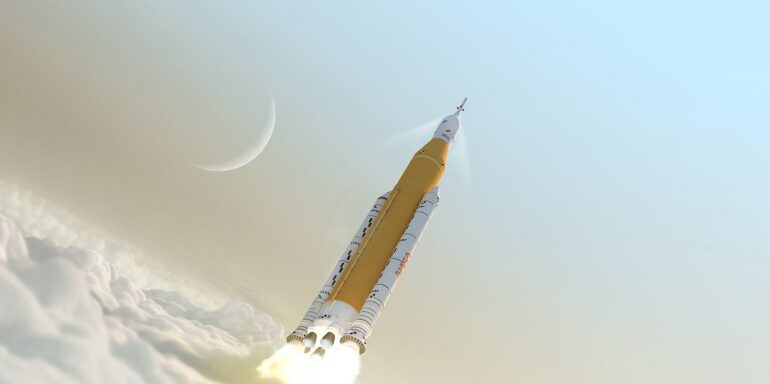NASA’s Artemis 1 mission is poised to take a key step toward returning humans to the Moon after a half-century hiatus. The mission, scheduled to launch on Monday, Aug. 29, 2022, is a shakedown cruise – sans crew – for NASA’s Space Launch System and Orion Crew Capsule.
The spacecraft is scheduled to travel to the Moon, deploy some small satellites and then settle into orbit. NASA aims to practice operating the spacecraft, test the conditions crews will experience on and around the Moon, and assure everyone that the spacecraft and any occupants can safely return to Earth.
The Conversation asked Jack Burns, a professor and space scientist at the University of Colorado Boulder and former member of the Presidential Transition Team for NASA, to describe the mission, explain what the Artemis program promises to do for space exploration, and reflect on how the space program has changed in the half-century since humans last set foot on the lunar surface.
How does Artemis 1 differ from the other rockets being launched routinely?
Artemis 1 is going to be the first flight of the new Space Launch System. This is a “heavy lift” vehicle, as NASA refers to it. It will be the most powerful rocket engine ever flown to space, even more powerful than Apollo’s Saturn V system that took astronauts to the Moon in the 1960s and ‘70s.
It’s a new type of rocket system, because it has both a combination of liquid oxygen and hydrogen main engines and two strap-on solid rocket boosters derived from the space shuttle. It’s really a hybrid between the space shuttle and Apollo’s Saturn V rocket.
Testing is very important, because the Orion Crew Capsule is going to be getting a real workout. It will be in the space environment of the Moon, a high-radiation environment, for a month. And, very importantly, it will be testing the heat shield, which protects the capsule and its occupants, when it comes back to the Earth at 25,000 miles per hour. This will be the fastest capsule reentry since Apollo, so it’s very important that the heat shield function well.
This mission is also going to carry a series of small satellites that will be placed in orbit of the Moon. Those will do some useful precursor science, everything from looking further into the permanently shadowed craters where scientists think there is water to just doing more measurements of the radiation environment, seeing what the effects will be on humans for long-term exposure.

The plan is for Artemis 1 to lift off, travel to the Moon, deploy satellites, orbit the Moon, return to Earth, safely enter the atmosphere and splash down in the ocean.
NASA
What’s the goal of the Artemis project? What’s coming up in the series of launches?
The mission is a first step toward Artemis 3, which is going to result in the first human missions to the Moon in the 21st century and the first since 1972. Artemis 1 is an uncrewed test flight.
Artemis 2,…



